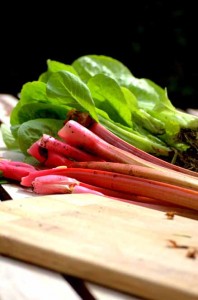
More evidence that low-calorie sweeteners are bad for your health
Studies show that artificial sweeteners can raise the risk of hypertension, metabolic syndrome, type 2 diabetes and heart disease, including stroke.

There are a number of foods that do particularly well in Britain, strawberries and asparagus spring to mind immediately as fabulous British foods.
But rhubarb is once again growing in popularity following a bit of a post 60s slump. In fact it now features on many a smart restaurant menu.
Forced or champagne rhubarb hits the shops first in February, commanding top prices for a luxury product of delicate pink, sweet and tender stems.
Come April however, the larger reddish green stalks of main season field rhubarb are available at much lower prices.
So, this is the time to make the most of it although the season continues until September.
Rhubarb goes beautifully with crumble; a classic marriage of sweet and tart it makes a lovely pudding for spring. Spice it up with ginger and top with my special crumble mix for a delicious dessert that will serve 4-6 people.
For the filling
For the crumble topping
Method
1 Preheat the oven to 180°C.
2 Put the rhubarb,chopped ginger and syrup, sugar, orange juice and zest into a pan and simmer until just soft then spoon it in the bottom of an oven proof dish.
3 Put the flours and butter into a bowl and rub them together until they are the texture of breadcrumbs. Mix in all the other ingredients and pour onto the top of the fruit.
4 Bake for about 30mins until the top is golden brown. Serve with custard or cream (optional).
A great British…vegetable
Rhubarb first came to Britain in the 16th century when it was used to treat stomach, colon and liver complaints although records of its use as a medicinal plant can be found as far back as 2,700 BC in Persia.
Native to the banks of the Volga in Siberia rhubarb is strictly classed as a vegetable from the same family as beets, chard and buckwheat although it is usually eaten like a fruit in sweet dishes. It makes a good accompaniment to fatty, savoury foods such as pork and mackerel and is a great ingredient for chutney.
Rhubarb is very low in calories, about 21 per 100g and contains a lot of vitamin C and fibre, making it a good food if you’re watching your weight just so long as you don’t add too much sugar. it also contains useful amounts of calcium and vitamin K and lutein, good for bone, brain and eye health.
For a novel way of sweetening it try using leaves of sweet cicely and some orange juice whilst cooking although you will probably need to add some sugar as well.

Please subscribe me to your newsletter mailing list. I have read the
privacy statement